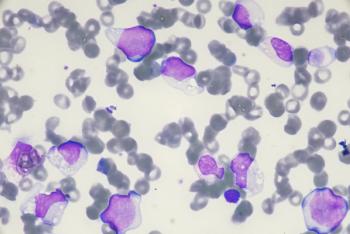
Four areas of unnecessary senior healthcare
Two reports highlight areas of elderly care that healthcare systems and health plans should avoid.
The number of seniors in the United States is projected to nearly double over the next 34 years-from 43 million in 2012 to nearly 84 million by 2050. During that time period, the number of seniors 85 and older is expected to jump from nearly 6 million to 19 million.
Because seniors are likely to experience frequent, complex interactions across many providers in the healthcare system, often there’s no single healthcare provider coordinating all of their care, according to the report, which was released in early 2016.
In addition, the American Geriatrics Society’s
Here are four areas of elderly care-highlighted in the report and guidelines-that healthcare systems and health plans should be aware of to ensure that elderly patients aren’t receiving unnecessary care.
1. Prostate cancer screenings for men 75 years and older
BynumControversy has long swirled around the use of the prostate-specific antigen (PSA) test for men between the ages of 55 and 69 years-largely because of conflicting results. The Dartmouth Atlas Project report reveals that for men aged 70 years and older, there’s a consensus among the U.S. Preventive Services Task Force (USPSTF), the American Cancer Society, and the American Urological Association against the PSA.
Despite this consensus, the national average rate of PSA screening for Medicare beneficiaries 75 years and older was nearly 20% in 2012. There’s a range across the country, with a low of approximately 10% in Casper, Wyoming, to a high of 30% in Miami.
On the face of it, this is just a blood test, says Julie Bynum, MD, MPH, associate professor at the Geisel School of Medicine at Dartmouth College and The Dartmouth Institute for Health Policy and Clinical Practice. The problem is that the blood test sets off a cascade of events. A positive result to the test could lead to a biopsy, and before you know it, the senior could get on an aggressive treatment path. The problem is that it’s hard to pull back once you get on that treatment path, says Bynum.
2. Breast cancer screenings among women aged 75 years and older
While the USPSTF recommends that women between the ages of 50 and 74 years receive mammography screenings every two years,
As with the PSA test, there’s a significant variation among Medicare beneficiaries on this measure as well. The report highlights that the national average rate of screening mammography was more than 24% among women 75 years and older in 2012-though there was significant variation in different parts of the country. For example, the rate was slightly more than 15% in Miami compared to more than 37% in Sun City, Arizona.
The reality is that measuring benefits versus harm changes with age, says Bynum. Mammogram screenings are the right thing to do when a woman turns 50 or even 45, she says. Once a woman hits 75, however, there’s evidence that continuing to have mammograms can actually hurt her-because it sets in motion even more tests to determine whether she has breast cancer and potentially aggressive treatments after a breast cancer diagnosis.
What helps in these cases-as with men 70 years and older regarding the PSA test-is for doctors to have thoughtful conversations with their patients about the risks and benefits associated with these tests, says Bynum.
3. Antipsychotics in treatment of dementia
Seniors with dementia can act aggressively, resist care, and act in other disruptive ways, according to the American Geriatric Society’s Choosing Wisely guidelines. Still, the society recommends against the use of antipsychotics when treating most seniors with dementia. That’s because these drugs, which are often prescribed to seniors with dementia, deliver unreliable and inconsistent benefits.
MulhausenUse of antipsychotics should instead be reserved for patients where non-pharmacologic treatments have been unsuccessful and in situations where patients are a threat to themselves or others, according to the organization’s guidelines. For patients who do not meet these criteria, providers should focus on identifying and encouraging behavioral changes that can make antipsychotics unnecessary.
There’s very little evidence that antipsychotic drugs are broadly effective for patients with dementia, says Paul Mulhausen, MD, chief medical officer at West Des Moines, Iowa-based Telligen, who helped develop the society’s recommendations. In addition, these medications come with significant side effects that can negatively affect patients’ balance, which can increase the chances that they will fall.
For some patients with dementia, creating a home-like environment can improve mood, reduce anxiety, and alleviate some of the suffering brought on by dementia’s behavioral and psychological symptoms, says Mulhausen. Still, other patients prefer a less-stimulating environment. Creating a day structure that includes meaningful activities such as crafts or listening to music can also be helpful, he says.
4. Tight glycemic control for those with diabetes
There is no evidence that tight glycemic control in older adults is beneficial, according to the American Geriatric Society’s guidelines for the treatment of seniors with type 2 diabetes. Rather, tight control has led to higher rates of hypoglycemia in seniors, which is why the society advocates for a glycemic range of 7% to 7.5% in healthy older adults with long life expectancy, 7.5% to 8% in seniors with moderate comorbidity and a life expectancy of less than ten years, and 8% to 9% in seniors with multiple comorbidities and shorter life expectancy.
The benefit of tight blood sugar control becomes less clear-and the risks become much higher-after the age of 65, says Mulhausen, who notes that this is particularly true after the age of 75. In addition, Mulhausen points out that medications that lower blood sugar are among the top three types of medications that result in drug events that cause hospitalizations.
Patients’ goals should help drive care plans
Both Bynum and Mulhausen agree that asking seniors what matters to them should help drive the type of care they receive. “The goal of healthcare is to help people achieve their goals in life, to help people live a life that can be as full as they want it to be,” says Mulhausen.
Absent these conversations with patients, he cautions that there’s a high risk that a physician will prescribe a treatment plan that doesn’t help patients achieve their goals and potentially causes patients to receive services they don’t want.
Whereas some patients want to maintain mobility, others are more focused on staying out of an institutional living center-and seniors’ doctors should be building these goals into patients’ care plans, he says.
Aine Cryts is a writer based in Boston.
Newsletter
Get the latest industry news, event updates, and more from Managed healthcare Executive.





















































